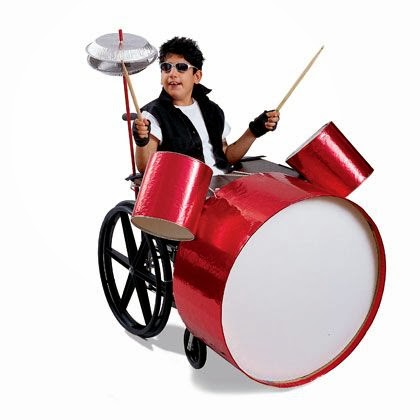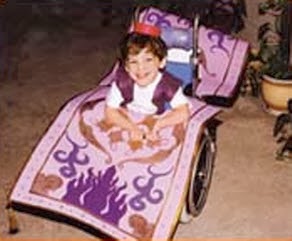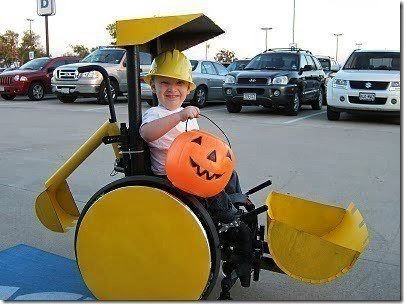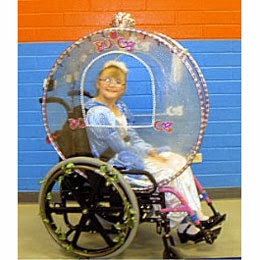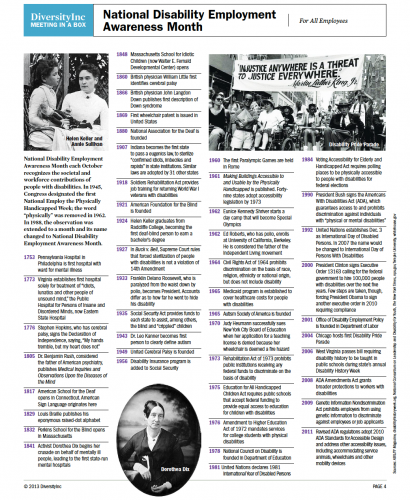Category Archives: Mobility
Pass on the Ribbon & Help Spread Rett Syndrome Awareness
Rett syndrome is a rare, severe, “girls only” form of autism. It’s usually discovered in the first two years of life, and a child’s diagnosis with Rett syndrome can feel overwhelming. Although there’s no cure, early identification and treatment may help girls and families who are affected by Rett syndrome.
Who Gets Rett Syndrome?
Rett syndrome is an autism spectrum disorder that affects girls almost exclusively. It’s rare — only about one in 10,000 to 15,000 girls will develop the condition.
In most cases of Rett syndrome, a child develops normally in early life. Between 6 and 18 months of age, though, changes in the normal patterns of mental and social development begin.
What Are the Symptoms of Rett Syndrome?
Although it’s not always detected, a slowing of head growth is one of the first events in Rett syndrome. Loss of muscle tone is also an initial symptom. Soon, the child loses any purposeful use of her hands. Instead, she habitually wrings or rubs her hands together.
Around 1 to 4 years of age, social and language skills deteriorate in a girl with Rett syndrome. She stops talking and develops extreme social anxiety and withdrawal or disinterest in other people.
Rett syndrome also causes problems with muscles and coordination. Walking becomes awkward as girls develop a jerky, stiff-legged gait. A girl with Rett syndrome may also have uncoordinated breathing and seizures.
What Causes Rett Syndrome?
Most children with Rett syndrome have a mutation in a particular gene on the X chromosome. Exactly what this gene does, or how its mutation leads to Rett syndrome, isn’t clear. It’s believed that the single gene may influence many other genes involved in development.
Although Rett syndrome seems to be genetic, the faulty gene is almost never inherited from the parents. Rather, it’s a chance mutation that happens in the girl’s own DNA. No Rett syndrome risk factors have been identified, other than being female. There is no known method for preventing Rett syndrome.
When boys develop the Rett syndrome mutation, they die shortly after birth. Because boys have only one X chromosome (instead of the two girls have), the disease is more serious, and quickly fatal.
How Is Rett Syndrome Diagnosed?
A diagnosis of Rett syndrome is based on a girl’s pattern of symptoms and behavior. The diagnosis can be made on these observations alone. Discussions between a doctor and a girl’s parents will help determine important details, such as when symptoms started.
Genetic testing can help confirm the diagnosis in 80% of girls with suspected Rett syndrome. It’s possible that genetic testing can help predict severity.
Treatments for Rett Syndrome
There are treatments available for Rett syndrome that focus on helping a girl live the best life she can with the condition. Physical therapy can help improve mobility; speech therapy may help somewhat with language problems; and occupational therapy helps girls perform daily activities — like bathing and dressing — independently.
Experts believe that therapy can help girls with Rett syndrome and their parents. Although a “normal” life may not be possible, some improvement can be expected with therapy. Participating in activities — including school — and improved social interaction are sometimes possible.
Medicines can treat some of the problems with movement in Rett syndrome. Medication can also help control seizures. Unfortunately, there is no cure for Rett syndrome.
What to Expect With Rett Syndrome
Many girls with Rett syndrome can be expected to live at least into middle age. Researchers are still following women with the disease, which was only widely recognized in the past 20 years.
Symptoms of Rett syndrome don’t usually improve over time. It is a lifelong condition. Often, there is a very slow worsening of symptoms, or symptoms remain stable. Girls and women with Rett syndrome will rarely be able to live independently.
National Disability Employment Awareness Timeline
Side Entry Versus Rear Entry Wheelchair Vans
 VS
VS 
The question of a Rear Entry wheelchair van versus a Side Entry van often comes up in conversation when a first time buyer enters the accessible van market. There are several things to consider; first, the family or care giver needs to decide on where the wheelchair user is going to sit. If the person in the wheelchair is able to drive and will be independent there are other things to consider, but for now, let us stay with an assisted member of the family.
Door height is an issue. For that we need to know how tall the person sits in their wheelchair.
Scooter or Power chair is next. Size and weight combination will come into play as we move along in the discovery process.
Will the person transfer into a seat or will they remain in their wheelchair while traveling?
Okay, now we get into seating. The side entry offers both mid-section and front seat options with tie-downs located throughout. In a rear entry van, the mid-section to rear of the vehicle, are the only seating options while remaining in the wheelchair.
There are five passenger seats available for family members in a side entry van versus six available seats in a rear entry. Both are in addition to whoever is in the wheelchair, which gives a total of six people in a side entry and up to seven in a rear entry.
For folks with a long wheelchair or scooter the rear entry is ideal. Over six feet of space is afforded to tie down the wheelchair and no turning to forward face is necessary.
A side entry requires up to eight feet accommodating the lowering of the ramp allowing access into your van. This may prohibit the use of the ramp while inside a garage or if someone parks to close while at the mall or a doctor’s appointment.
The rear entry does not have the blocked in problem, you are always accessing your van from the aisle.
In summation, like anything else, it is best to try before you buy. Our Mobility Center has both styles of wheelchair vans. See which style suits your lifestyle and then consider the purchase of either a new or used mobility equipped van. Always consult with your mobility product specialist for any additional questions you may have.
Presidential Proclamation – NDEAM 2013
National Disability Employment Awareness Month, 2013
By the President Of The United States Of America
A Proclamation
Our Nation has always drawn its strength from the differences of our people, from a vast range of thought, experience, and ability. Every day, Americans with disabilities enrich our communities and businesses. They are leaders, entrepreneurs, and innovators, each with unique talents to contribute and points of view to express. During National Disability Employment Awareness Month, we nurture our culture of diversity and renew our commitment to building an American workforce that offers inclusion and opportunity for all.
Since the passage of the Americans with Disabilities Act, we have made great progress in removing barriers for hardworking Americans. Yet today, only 20 percent of Americans with disabilities, including veterans who became disabled while serving our country, participate in our labor force. We need their talent, dedication, and creativity, which is why my Administration proudly supports increased employment opportunities for people with disabilities. To that end, I remain dedicated to implementing Executive Order 13548, which called on Federal agencies to increase recruitment, hiring, and retention of people with disabilities. As a result of our efforts, the Federal Government is hiring people with disabilities at a higher rate than at any point in over three decades. Most recently, we updated the rules to make sure Federal contractors and subcontractors are doing more to recruit, hire, and promote qualified individuals with disabilities, including disabled veterans. And thanks to the Affordable Care Act, States are taking advantage of new options to support and expand home and community-based services.
In the years to come, I will remain committed to ensuring the Federal Government leads by example. This year, as we mark the 40th anniversary of the Rehabilitation Act, I will continue to marshal the full resources of my Administration toward effective and comprehensive implementation.
If we swing wide the doors of opportunity for our family, friends, and neighbors with disabilities, all of us will enjoy the benefits of their professional contributions. This month, let us uphold the ideals of equal access, equal opportunity, and a level playing field for all Americans.
NOW, THEREFORE, I, BARACK OBAMA, President of the United States of America, by virtue of the authority vested in me by the Constitution and the laws of the United States, do hereby proclaim October 2013 as National Disability Employment Awareness Month. I urge all Americans to embrace the talents and skills that individuals with disabilities bring to our workplaces and communities and to promote the right to equal employment opportunity for all people.
IN WITNESS WHEREOF, I have hereunto set my hand this thirtieth day of September, in the year of our Lord two thousand thirteen, and of the Independence of the United States of America the two hundred and thirty-eighth.
BARACK OBAMA



